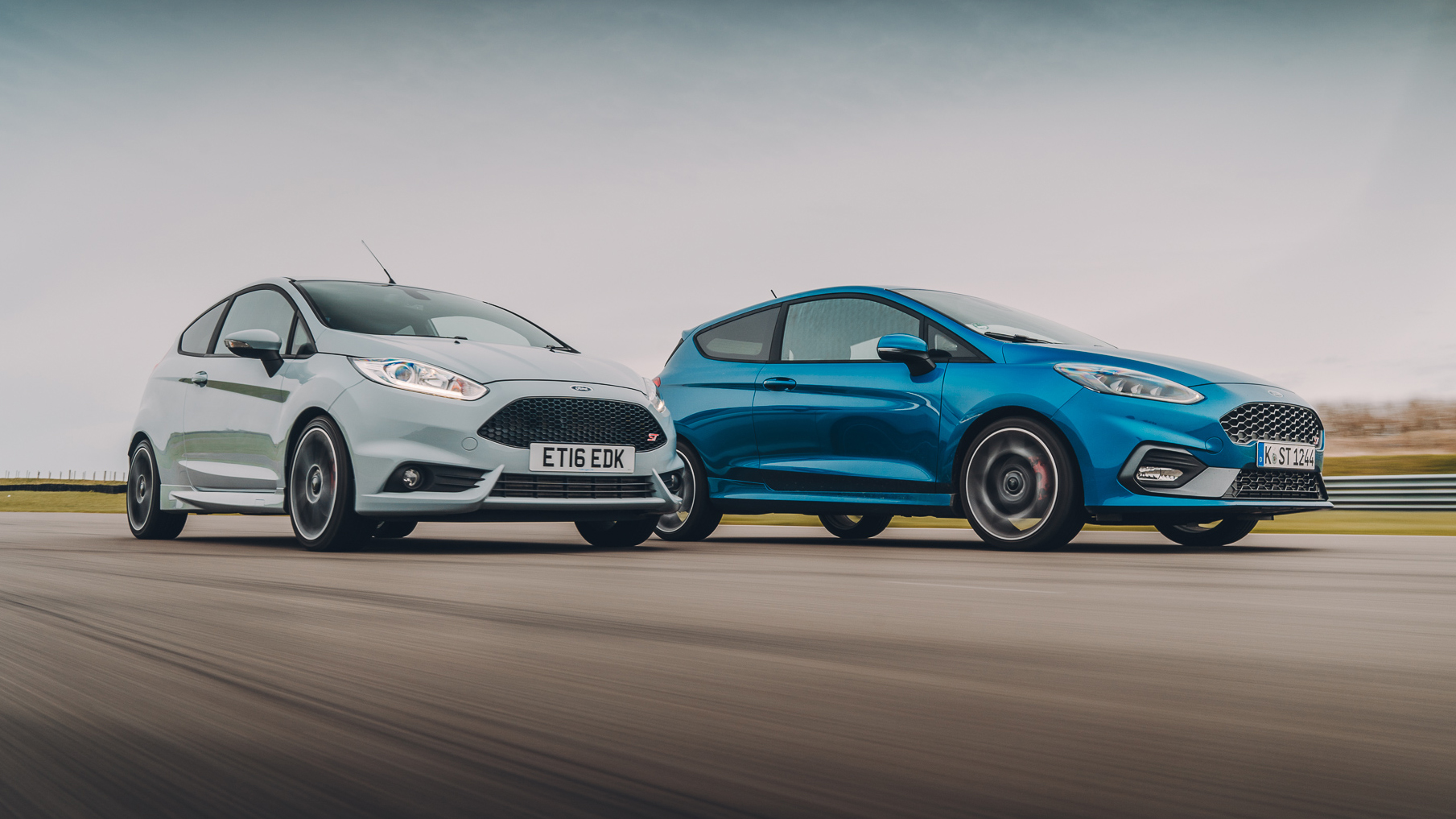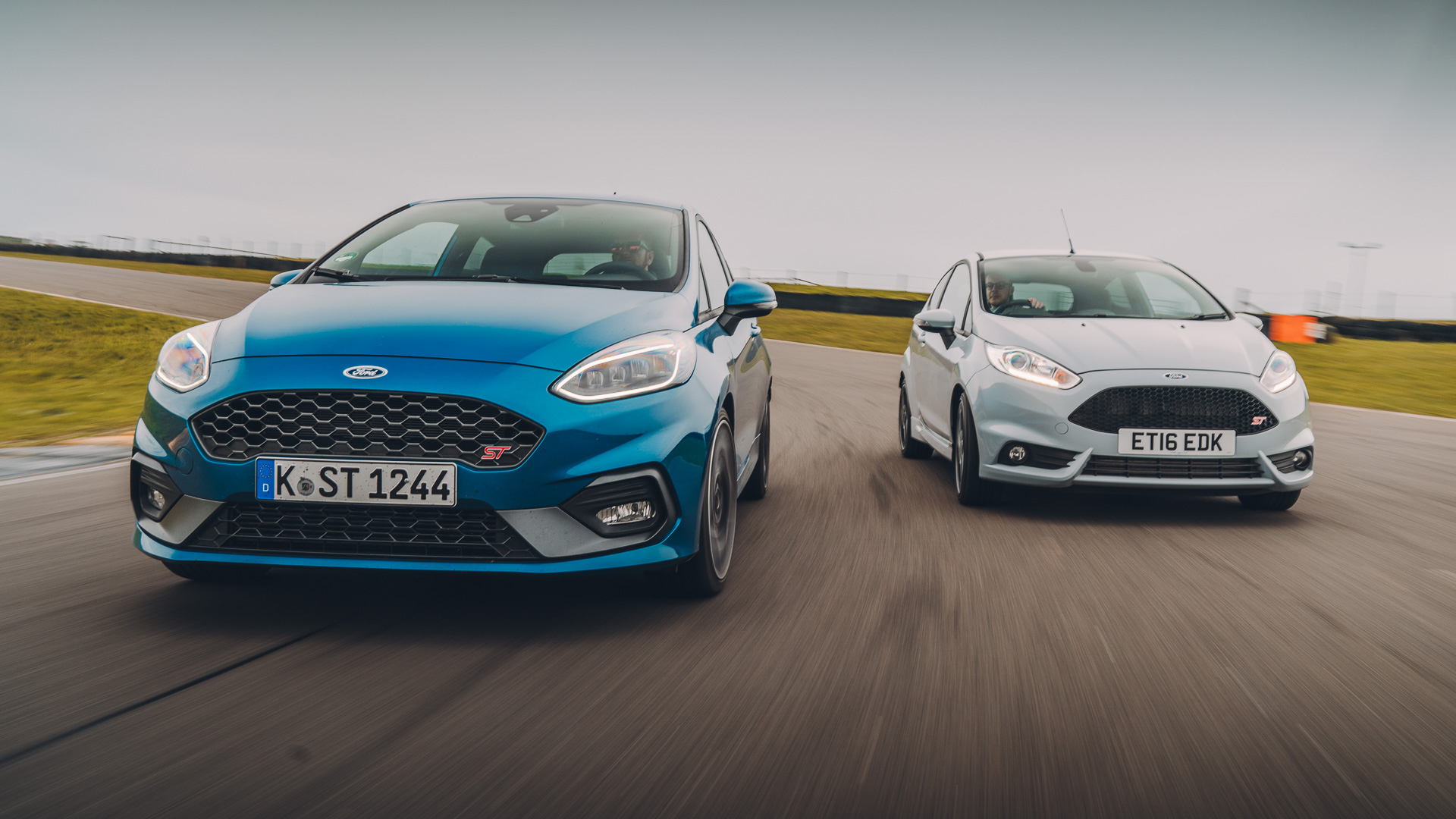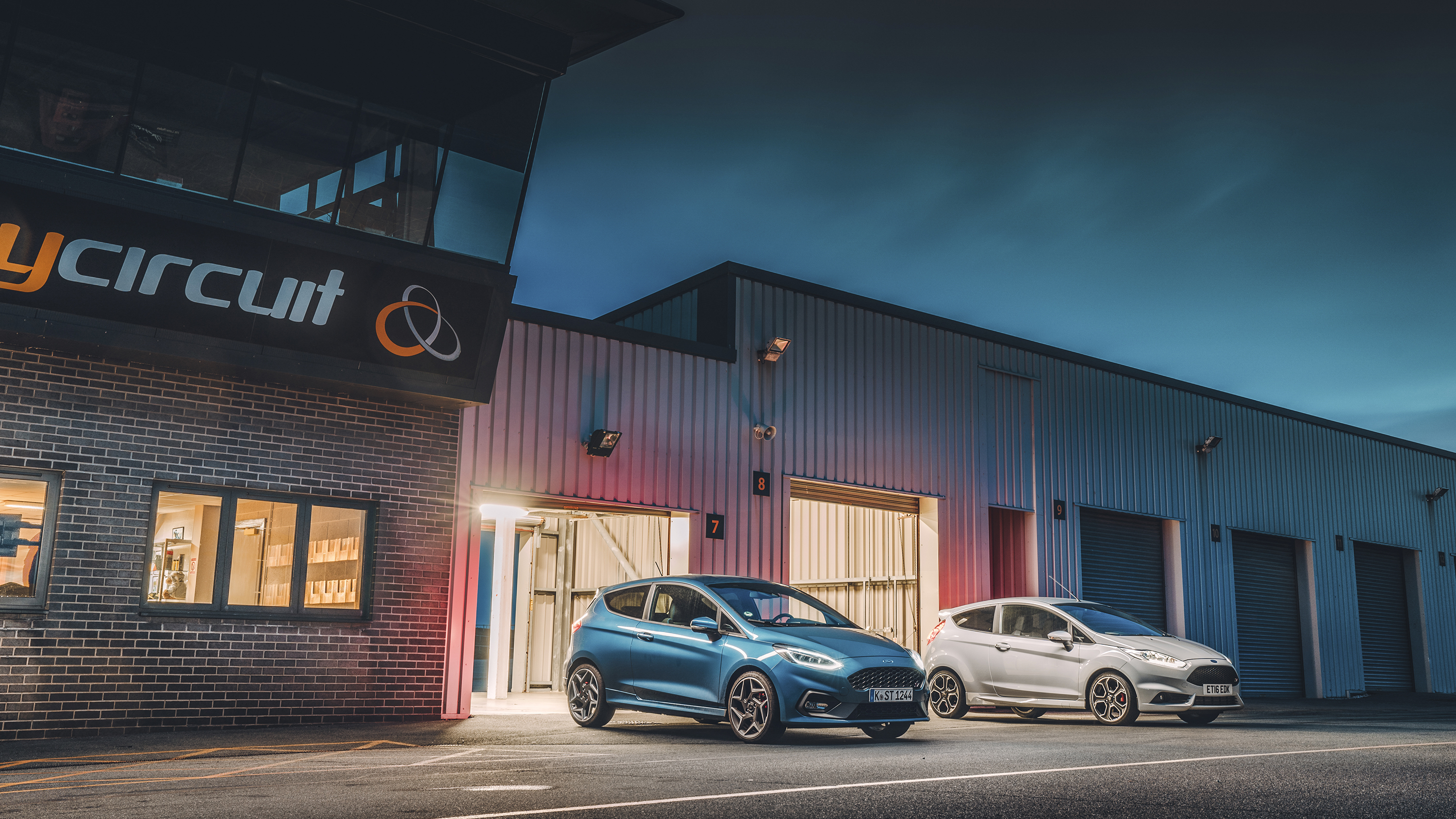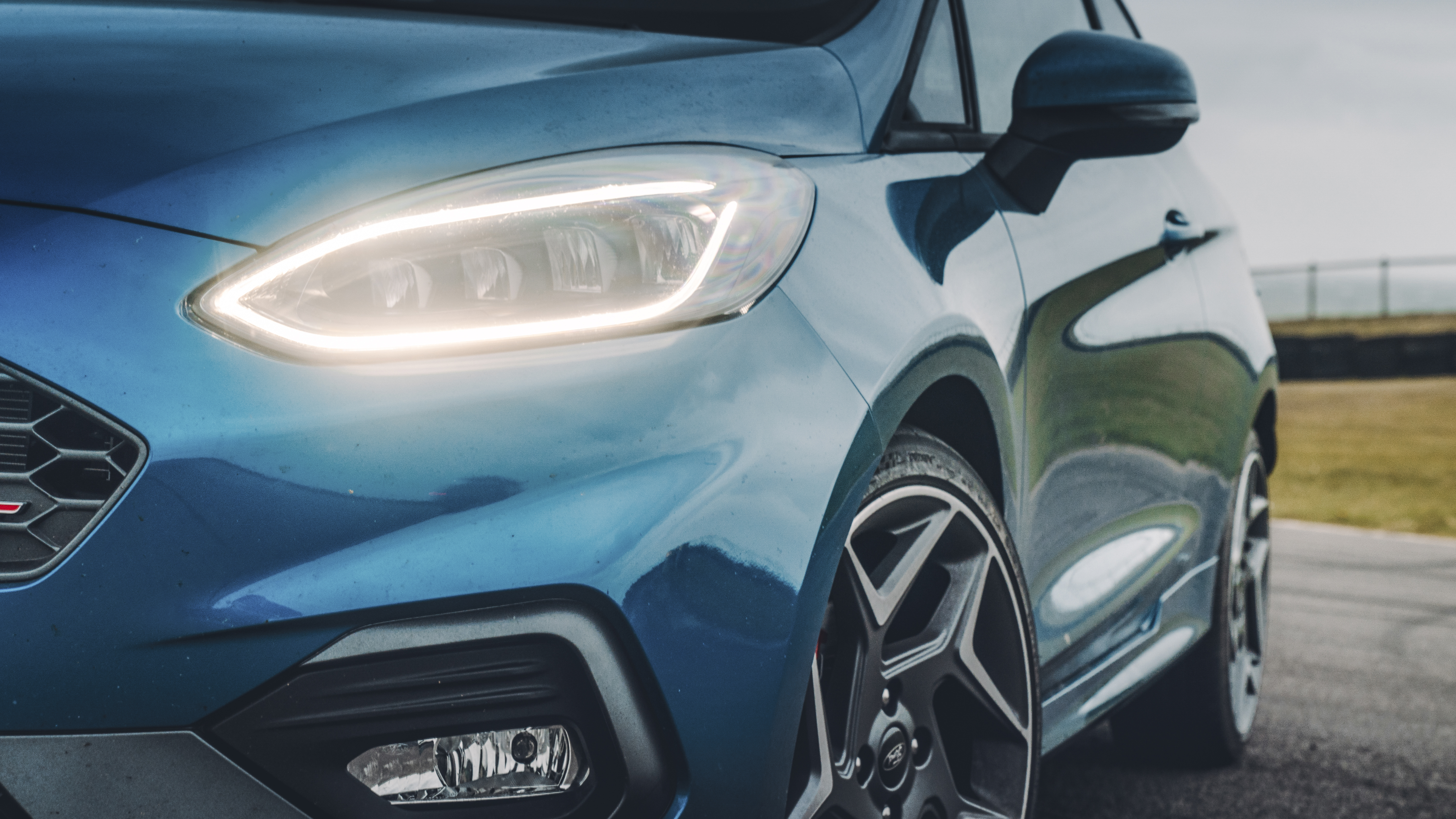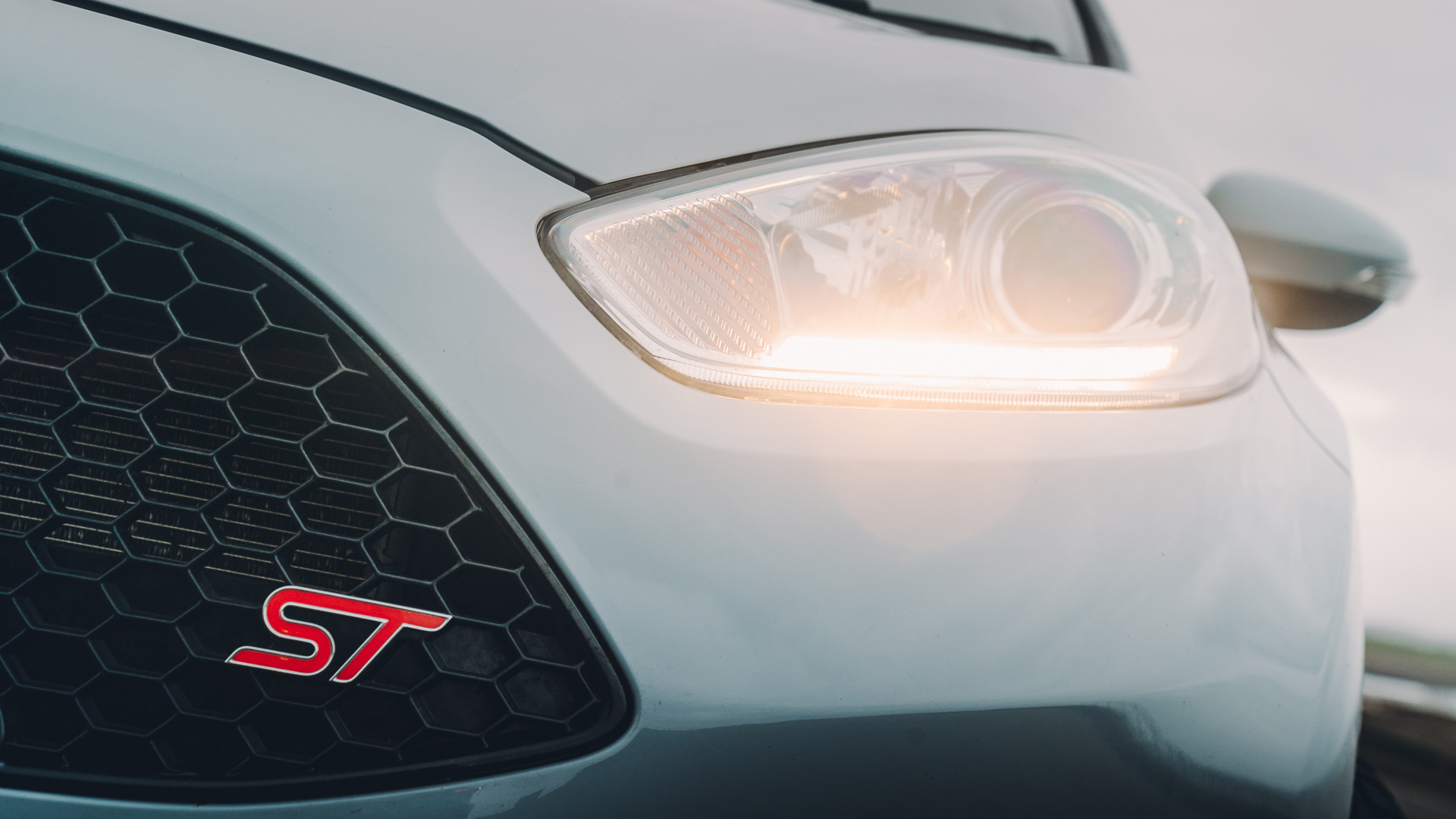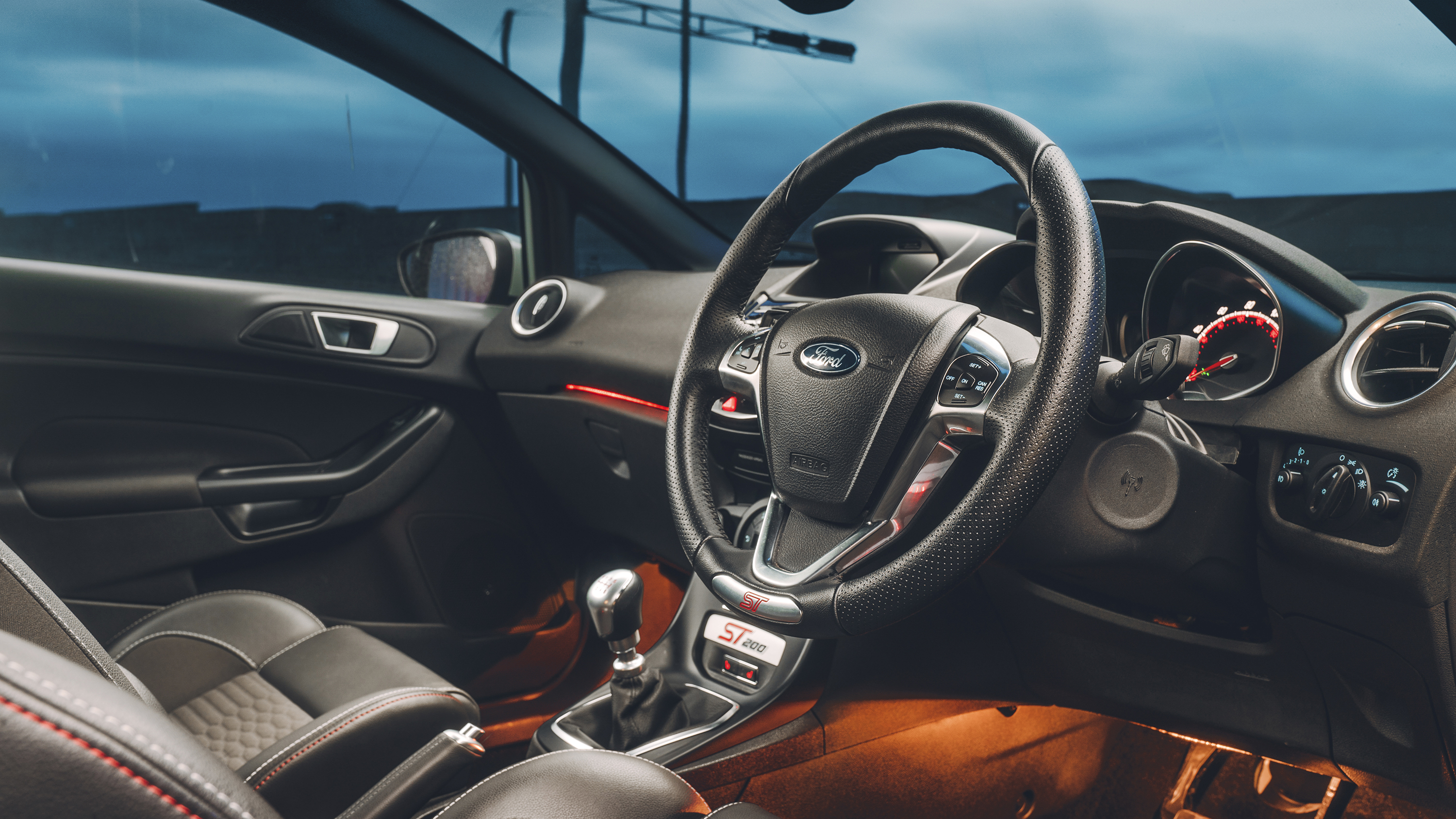
Top Gear's big Ford Fiesta ST test: part 2
In the second part of our throwback Fiesta test, the ST faces its fiercest competitor: the old one
It’s a dangerous game, reinvention. Especially when it comes to cars as universally well-loved as Ford’s Fiesta ST – a nippy, happy little bundle of fun that managed to scratch the hot-hatch itch for reasonable money. Don’t change it enough, and it won’t keep up with the competition. Change it too much, lose the heart of it, and you risk alienating all those that fell for it in the first place. Which means that the new ST’s most uncomfortable face-off happens here, at Anglesey Circuit, under a steel-grey sky, fat with the promise of rain. Pocket rocket adversaries come no more highly recommended than the ‘old’ 1.6 ST200.
Part 2
This feature was originally published in Issue 309 of Top Gear magazine (2018)
Location: Anglesey Circuit
Miles: 1,055 Mood: Up-for-it Writer: Tom Ford Photography: Mark Riccioni
Let’s cut to the chase; this Fiesta ST200 was the last-of-line special from 2016. It makes 197bhp/214lb ft dawdling, but 215bhp/236lb ft in the boosted overtaking ranges. It also has slightly shorter gearing (by 15 per cent), all of which nip the 0–62mph time down from 6.9secs to 6.7, with 143mph flat-out. It cost a whopping £22,745 a couple of years ago. We’ll ignore the warranty-approved Mountune kit that did all this – apart from the lower ratios – for £599, because it blurs the comparison even further. For one thing, Ford hasn’t yet announced if the latest version will also get a no-brainer dealer-fit tuning package. At the moment, it manages 197bhp and 214lb ft. When equipped with some sticky tyres and optional Performance Pack Quaife front diff, it hits 62mph in 6.5 seconds (0.2sec faster than standard), and 144mph fully extended. So it’s a touch quicker than even the ST200, though probably not by enough to figure out with standard human diagnostics. But let’s face it, these are respectable rather than revelatory numbers, and plenty quick enough anyway. What’s more important in cars like these is what the experience feels like, rather than who wins stopwatch mindgames. Time to drive.
The ST200 is, as I remember around technical Anglesey, feisty, slightly combative and a massive laugh. It’s not got ridiculous power, so you must fight to maintain momentum, find that balance between entry speed and settled grip. In fact, it has its own little haiku based on its very obvious handling characteristics: tip and grip, lift and slip. Feed it into a bend and sense the inside rear wheel cock into the air – you really can feel it – then balance on the throttle so that you don’t simply understeer. A sharpish lift off the throttle unweights the rear and you get a little slide, the length and severity of which depends on how fast you were going in the first place and how hard you back out. Nothing weird, no snap, just a little car happy being thrown about at the limit; the steering, gearchange and brakes similarly natural. In fact, there’s plenty of stuff here that proves its worth by being unobtrusive: no modes, no ‘active’ gear, not good or bad, just in that little Goldilocks median that means you concentrate on what you’re doing. The engine isn’t the defining feature, a bit coarse high up and lacking in any significant change the harder you push it, but it’s well matched to the chassis. All is well from 2016. The new ST has a fight on its hands.
First up, New looks a bit more familial, more like the even newer Focus. Personally, I think it’s a little less distinctive, especially from the back, but it’s not offensive, just different. First impressions are pretty obvious – the three-cylinder sounds great (even when you know some of it is stereo-generated), the steering is very quick, and it has modes – three of them, as Ollie mentioned earlier. As it happens, I’m not a big fan of multi-modal driving, especially in purportedly ‘simple’ cars.
After fiddling for a while, we select Track with the traction off and just attack twisty Anglesey as we did with the ST200. And it is good. The suspension is more supple, though not soft, and whoever says that a torsion bar rear end can’t handle needs to drive one of these. Ford’s engineers haven’t forgotten what made the ST a car that punches up a weight division; lovely natural balance, accessible fun stuff. The wheels feel a bit big – 18s on a car this size seem to bother the ride a little, but add to pure mechanical grip in extremis. These are optional anyway – 17s will be standard. And you can feel the diff dragging the car straight where the old one would spin its power away. There’s also torque vectoring, although it’s pretty subtle. You still have to meter the delivery though – if you just jump on the throttle with the traction control disabled, you simply spin both front wheels under load and head out of bounds as the crow flies. And the crow flies into barriers around here. It’s actually very well set up in Track mode, with the traction relaxed but not entirely off, and there’s a huge amount of satisfaction to be had at modest speeds.
It’s also ridiculously easy to three-wheel around a corner, happily hopping up a tyre at modest cornering velocities – though slightly less prone to slide the back when you lift, and the wider track no doubt helps add that extra feeling of stability. Slightly more grown-up than before, but thankfully not so mature that it gets boring. And it never does. Because these are little, light-ish things – they don’t destroy tyres or get ridiculously thirsty, even on track. Both sets of brakes were fine – if a bit smelly – and neither got hot nor started to feel loose. You could hammer either all day and never get particularly concerned.
Top Gear
Newsletter
Thank you for subscribing to our newsletter. Look out for your regular round-up of news, reviews and offers in your inbox.
Get all the latest news, reviews and exclusives, direct to your inbox.
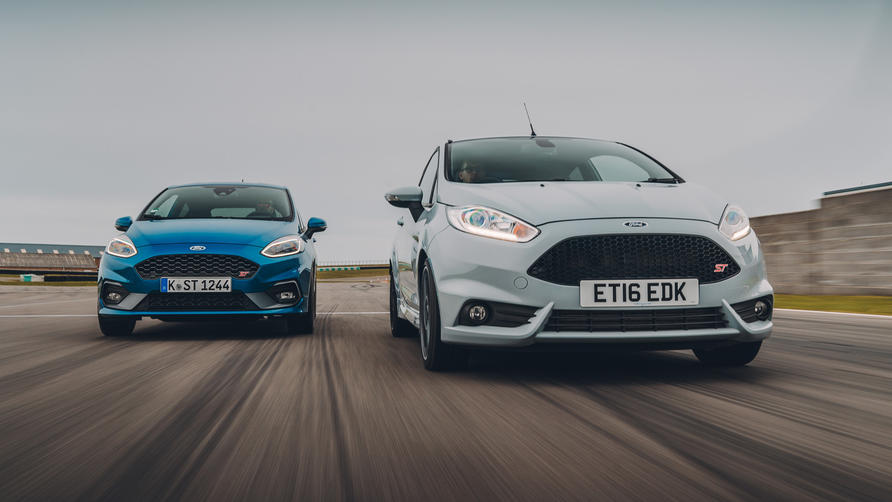
The bad stuff for the new car is a bit nitpicky but relevant. As mentioned, the noise is partly piped in, and is bubbly and amusing at first in Sport and Track with the exhaust valves opened, until you realise that it makes the same three ‘pop-pop-bang’ eruptions every time. Makes it feel more fake than it is. The turbo seems to crank down out of the rev range more slowly than the old car, feeling like it’s got a heavy flywheel, and it’s got the same workmanlike attitude, though it has to be said it’s a characterful, off-beat little thing. It’s also softer riding than before in most situations, but still not properly comfy, an impression cemented by the Recaro seats that feature a squab side bolster that pinches pretty much anyone who drives it. Nothing huge to worry about.
The final conclusion is that the new ST does everything the old ST does, just a bit faster. It’s got more grip, more usable torque – albeit not a huge amount more – and the same playful cornering ability. It’s still a Fiesta ST in all the ways that matter – full of excitement and verve and fun. In fact, like you always have, you don’t drive this car, you conspire with it. In a world full of heart-attack-fast sports cars that need a track to really get going, the ST still makes a whole lot of sense.
Honour intact, now it’s off to draw the lower bulge of our nationwide ‘3’. And its reward, in about 350 miles’ time, is an ancestral welcome party waiting in the hot hatchback’s spiritual home. Goodbye to the natural majesty of rugged Welsh coastal beauty; Essex here we come.
Trending this week
- Car Review
BMW 1 Series







